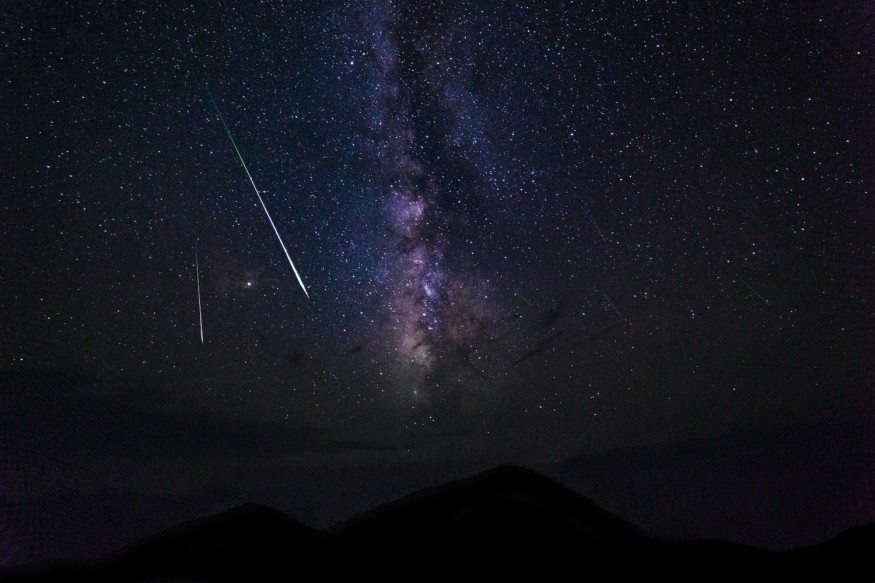
This year's October night skies will show off a bright full moon and two meteor showers. This is why the month is when telescopes are taken out from storage, and stargazers get excited.
After all, the sun continues to set earlier, the nighttime hours are longer, and the nights are cool but not freezing.
Treats from October Night Skies
There are three treats from the October Night Skies.
The Draconid meteor shower will first reach its peak on October 8 in the evening. Then, on October 9, there will be a full moon in October known as the "Hunter's Moon" because its illumination makes hunting simpler. And third, the Orionid meteor shower will also peak on October 21 in the evening and early the following morning.
Draconid Meteor Shower
The Draconid meteor shower is caused by the small periodic comet 21P/Giacobini-Zinner, which leaves a trail of dust.
On December 20, 1900, Michel Giacobini discovered the meteor shower at the Nice Observatory in France.
Dr. Bill Cooke, head of the Meteoroid Environment Office-NASA, explains that every 6.6 years, comet Giacobini-Zinner travels through the inner solar system.
It always leaves behind what could be described as a thin filament of dust.
These individual filaments coalesce into a network over time, which the Earth travels through every October as it orbits the sun.
It's intriguing how the Draconid meteor shower becomes an all-or-nothing event because of this filament network.
Cooke said that the planet typically only grazes a single or two filaments as it moves through gaps between them.
But now and then, the planet almost collides with one, which is when the fireworks start.
The constellation Draco the Dragon is the source of the meteor shower's name, the Draconids.
According to EarthSky, there will be a better chance of seeing meteors before midnight on October 8 because the constellation would be high in the sky.
This year, observers can anticipate seeing up to ten meteors per hour.
However, there's always a chance of seeing hundreds of meteors in a period of one hour because scientists don't know much about the Draconids.
The good news is that anyone can see the meteors, regardless of where the constellation Draco is in the sky.
Experts say that all that's needed to do is to step outside, sit back in a chair or lie on your back, and gaze up at the sky.
Human eyes will get used to the darkness after about 30 minutes, and then meteors will start to appear. However, looking at a phone screen will require the stargazer to readjust their eyes to the darkness once more.
Hunter's Moon
Since it is the Full Moon following the Harvest Moon, this Full Moon is frequently referred to as the Hunter's Moon.
This Moon is known as the Hunter's Moon, according to the Farmer's Almanac. After all, hunters can more easily see the game to hunt because all of the fields have been harvested.
Orionids Meteor Shower
According to NASA, the Orionid meteor shower, which peaks in the middle of October every year, is one of the most stunning showers of the year.
Orionid meteors are noted for their speed and brightness, according to NASA.
These meteors are swift; they enter Earth's atmosphere at a speed of about 41 miles per second or 148,000 miles per hour.
NASA continues that fast meteors can leave in their wake glowing "trains," or incandescent fragments of debris, that last for a few seconds to minutes.
When watching the Orionid meteor shower, keep an eye out for prolonged light explosions because fast meteors can occasionally turn into fireballs.
Read also : Famous Lyrid Meteor Shower to Peak this Week
The renowned comet 1P/Halley is responsible for leaving behind the pieces of space junk that collide with Earth's atmosphere to form the Orionids.
The comet named after Edmond Halley, who found it in 1705, orbits the Sun for about 76 years.
It's interesting to note that each May, the Eta Aquarids meteor shower is also brought on by the debris the comet left behind.
Since the meteors appear to originate from the constellation Orion, the Orionid meteor shower is so named.
Although the meteor shower lasts from September 26 through November 22, its peak will occur on October 21 in the evening and the following morning. Then, stargazers can anticipate seeing about 15 meteors per hour.
Stargazers
Stargazers will want to be in a place that is extremely dark and far from city lights to increase their chances of seeing the meteor showers.
A list of the best stargazing locations that are dark, Travel Awaits reported.
© 2026 NatureWorldNews.com All rights reserved. Do not reproduce without permission.





